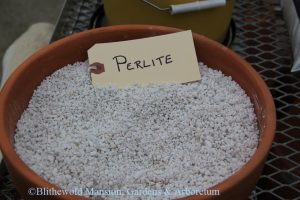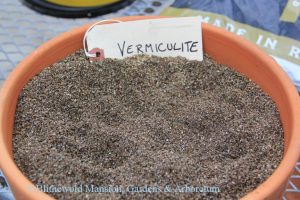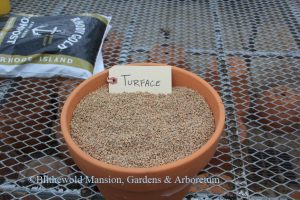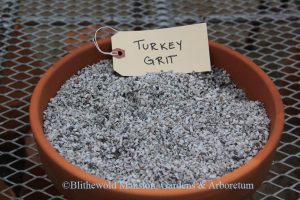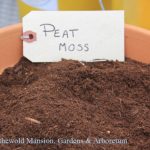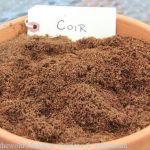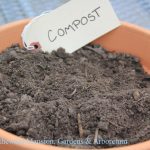Container Mixology
What’s in your potting mix? That’s the question of the day here at Blithewold as we re-examine the important components of a good potting soil. Technically speaking, most bagged soils you can find at your neighborhood garden center are soil-less. They are made up of peat moss, bark, perlite, vermiculite, fertilizer, etc. They often do not contain any actual soil. What Gail and I do when we make up a potting mix for our plants is we start with a good bagged potting mix and we amend it until we are happy with the consistency. This will be different depending upon the particular kind of plant we are working with that day. Annuals, for instance, require a different mix from succulents which require a different mix from ferns. This past weekend Gail and I kicked off the Gardeners Round Table talks by teaching a potting soil class. We explained each of the components of a good mix are and how to use them to get the most out of your potted plants.
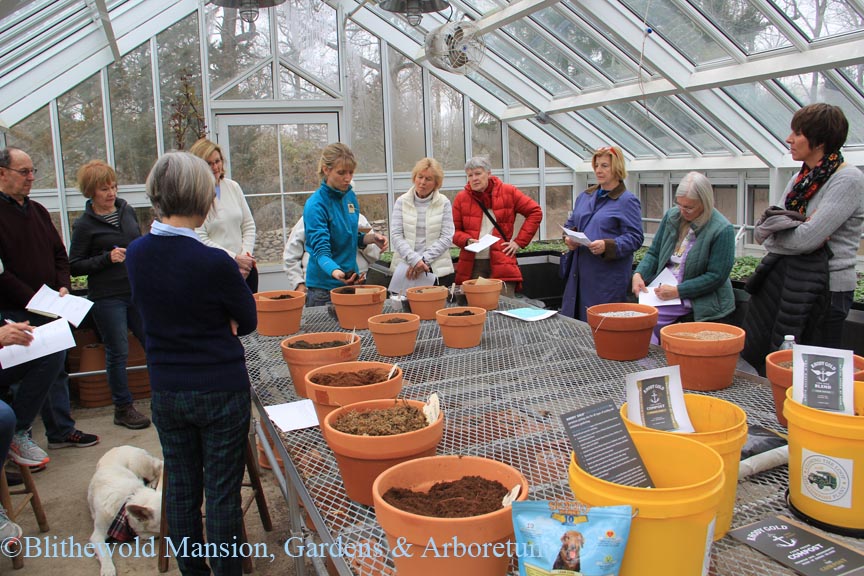
There are two main sections of potting mix components. The first is the additives that assist with drainage. The most commonly found additives are perlite, vermiculite, turface, and turkey grit. These all serve a similar purpose, but each has its pros and cons. Perlite is a volcanic glassy silicate super heated until it pops like popcorn. This popping process creates many nooks and crannies that allows air and water to get through the perlite to the roots of the plant. It can be used alone for starting cuttings (it’s what we use in our propagation house). Or it can be combined with other ingredients to assist in good drainage. It is sterile and pH neutral. Vermiculite is a mineral that is heated until it expands into small accordion-like pieces. It can be used alone as it is light and sterile – making it a perfect place for a seedling to begin its life in the world. As a soil component, vermiculite provides both air and water access to roots (similar to perlite). Turface and turkey grit are used interchangeably in our potting mixes to provide better drainage. These two components are particularly important for succulents. Succulents need water regularly, but prefer it to run over their roots and away from them. They do not want to sit in a pool of water. The turkey grit and turface help provide this important drainage that succulents need. (Click on the pictures below to see these components up close.)
The other side of the potting mix spectrum is those components that help to retain moisture. The three we highlighted in our class are peat moss, coir, and compost. Peat moss is a major component to many bagged mixes you will find today. It is harvested from sites around the globe. It is a very slowly renewing resource, so Gail and I have been looking for replacements. We often use coir instead of peat moss when we are trying to retain moisture in a particular mix. Coir is made from a part of coconut shells which otherwise would have been thrown away. It retains both air and moisture when added into a potting mix. The final component, which perhaps is the most important, is compost. We use our own compost that is made here at Blithewold. We do not “cook” our compost so, unfortunately, there are viable weed seeds in it, but we consider the few weeds we get as worth the cost. Compost is broken down plant material full of available nutrients and good bacteria and fungi. Healthy soil makes healthy plants.
Healthy soil truly is the key to a flourishing potted garden. All too often one purchases a plant from a garden center, plops it into a pot with some bagged soil, waters it and thinks everything will turn out great. But those plants will dwindle and fade away as the summer progresses. This is preventable. By taking a regular bagged mix, reading the ingredients (now you know what most of those ingredients are), and considering how to amend the mix, you are taking the best steps to ensure that your plant will thrive. If you end up adding nothing else, make sure that you at least add some compost. Compost helps your plants be as healthy as they can be. You do not have to be an expert to make your compost, but you also don’t have to make it yourself. It is available locally! We recently discovered Rhody Gold compost (Rhody Gold). But wherever you prefer to get your compost, just don’t forget to add it into your potting mix for the health of your plants.
Spring will soon be upon us! I hope you are dreaming up some beautiful garden pots on this dreary March day. When warmer weather finally arrives, you’ll be prepared with a good solid potting mix for your plants. Happy planting!
Please join us for our next Gardeners Round Table on April 28th and April 30th when Rick Burt will be teaching on the How-To’s of Tuberous Begonias. Click here to sign up. We look forward to seeing you there!

